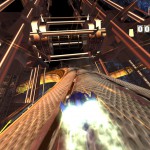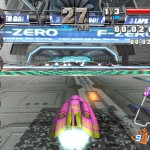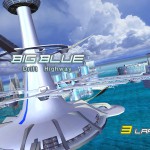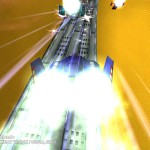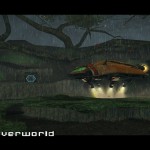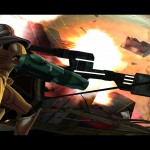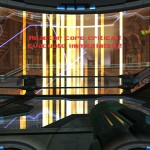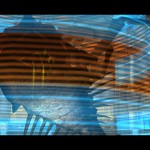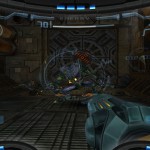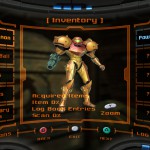Iwata dishes on GameCube’s secret 3D abilities
Posted on 14 years ago by Brian(@NE_Brian) in GameCube, News | 3 Comments
The following information comes from the Q&A portion of Nintendo’s latest financial results…
“…In fact there have already been discussions for a possibility of a 3D video game for a long time. To tell you the truth, GameCube is secretly designed to load graphical circuits which display graphics for right and left eyes respectively, for a future possibility of realizing 3D gaming experience. So actually we have had interest on this technology, but I have some doubt about everyone needing glasses to play.”
This news makes you wonder if the Wii has the same functionality as the GameCube in terms of providing 3D experiences. However, as we know, Nintendo isn’t too big on 3D gaming at the moment.
The 10 most important Nintendo games of the last decade
Posted on 14 years ago by Brian(@NE_Brian) in DS, Features, GameCube, GBA, Wii | 11 Comments
The last decade saw a number of changes, not just for Nintendo, but for the gaming industry as a whole. As systems became more powerful we were introduced to new games, as well as new ways to play games. We were forced to say goodbye to some of our favorite developers and series, but we still discovered new ones, and even some old ones that had been forgotten over time. As time progressed from the year 2000 to 2009, gaming also progressed, changing from a fairly niche pastime to a culture that gained some degree of mainstream recognition. These are the 10 games for Nintendo systems that I feel best represent gaming over the last 10 years.
NPD’s top 10 best-selling games
Posted on 14 years ago by Brian(@NE_Brian) in GameCube, News, Wii | 0 comments
This information accounts for all data since 1995…
Wii Play
Guitar Hero III: Legends of Rock
Grand Theft Auto: San Andreas
Call of Duty: Modern Warfare 2
Wii Fit
Mario Kart w/ Wheel
Call of Duty 4: Modern Warfare
Madden NFL ’07
Call of Duty: World at War
Namco Museum
F-Zero GX 720p screenshots
Posted on 14 years ago by Brian(@NE_Brian) in GameCube, News | 0 comments
Famitsu reveals how many games reviewed scored 32 or more
Posted on 14 years ago by Brian(@NE_Brian) in DS, GameCube, GBA, News, Wii | 3 Comments
This data is from June 20, 1986 to December 24, 2009. The number in the parenthesis is the total number of games reviewed for that system while the number next to it shows how many titles received a score of 32 or higher.
* Family Computer: 34 (955)
* Sega Master System: 0 (12)
* PC Engine: 22 (628)
* Mega Drive: 16 (534)
* Game Boy/Game Boy Color: 15 (1,071)
* Atari Lynx: 0 (12)
* Super Grafx: 0 (22)
* Game Gear: 0 (190)
* Super Famicom: 55 (1,407)
* NeoGeo CD: 2 (32)
* PC-FX: 0 (24)
* Super 32X: 0 (11)
* Sega Saturn: 52 (930)
* PlayStation: 131 (2,635)
* Virtual Boy: 0 (18)
* Nintendo 64: 38 (183)
* NeoGeo Pocket: 0 (56)
* Dreamcast: 62 (407)
* Wonderswan: 1 (179)
* Nintendo 64DD: 0 (3)
* PlayStation 2: 395 (1997)
* Pokemon Mini: 0 (6)
* Game Boy Advance: 91 (618)
* Nintendo GameCube: 87 (240)
* Xbox: 41 (185)
* Nintendo DS: 151 (883)
* PlayStation Portable: 90 (383)
* Xbox 360: 105 (239)
* PlayStation 3: 77 (172)
* Wii: 50 (257)
Thanks to Thomas N for the news tip!
Metroid Prime 1080p screenshots
Posted on 14 years ago by Brian(@NE_Brian) in GameCube, News, Wii | 1 Comment
Nintendo Power’s most favorite remakes
Posted on 14 years ago by Brian(@NE_Brian) in DS, GameCube, GBA, News, Wii | 0 comments
This is another part of Nintendo Power’s “250 reasons to love Nintendo” in their latest magazine. The list is in no particular order.
– Final Fantasy IV (DS)
– Metal Gear Solid: The Twin Snakes (GCN)
– Super Mario All-Stars (SNES)
– Metroid: Zero Mission (GBA)
– Resident Evil (GCN)
Nintendo Power’s most overlooked gems
Posted on 14 years ago by Brian(@NE_Brian) in DS, GameCube, GBA, General Nintendo, News, Wii | 4 Comments
This is another part of Nintendo Power’s “250 reasons to love Nintendo” in their latest magazine. The list is in no particular order.
– Astro Boy: Omega Factor (GBA)
– Billy Hatcher and the Giant Egg (GCN)
– Shantae (GBC)
– Rocket: Robot on Wheels (N64)
– Metal Arms: Glitch in the System (GCN)
– Drill Dozer (GBA)
– Skies of Arcadia: Legends (GCN)
– Ogre Battle 64: Person of Lordly Caliber (N64)
– Zack & Wiki: Quest for Barbaros’ Treasure (Wii)
– Beyond Good & Evil (GCN)
Aonuma has some regrets about Twilight Princess
Posted on 14 years ago by Brian(@NE_Brian) in GameCube, News, Wii | 1 Comment
“For Twilight Princess we used the adult Link and one of the interesting things about that was how we considered the precise proportions of Link and the world. The scale is because we aimed for a more realistic quality in the size of the environments of Hyrule and what that Link faced. But the question is whether or not we were able to incorporate any and all of the interesting game ideas that were able to take advantage of that kind of sheer grand scale within the Zelda universe. I am afraid that definitely no, we were not able to do all the things that perhaps with hindsight we had the capabilities to do. With that as the starting point, we are now developing the Wii version of Legend Of Zelda. In the case of Spirit Tracks it was relatively easier, because regardless of the actual proportions between the player character and the other objects, we can simply concentrate upon the many game ideas we want to realise. But in the case of trying to depict a relatively photorealistic three-dimensional world, we have to be very careful to adapt the ideas so that they seem to perfectly fit with that world. I must admit that’s actually one of my very greatest regrets as regards the Twilight Princess.” – Eiji Aonuma
I enjoyed Twilight Princess a great deal, but one thing in particular always bothered me. While traveling through Hyrule, while the land itself was massive, it didn’t seem like there was a whole lot to do. I would say that a lot of areas lacked “liveliness.” Hopefully the developers will be addressing that in some way for the next Zelda title.
Game Informer’s top 200 games of all time
Posted on 14 years ago by Brian(@NE_Brian) in DS, GameCube, News, Wii | 156 Comments
In honor of Game Informer’s 200th issue, the magazine compiled a list of the top 200 games of all time. The titles are across all platforms and come from many different generations of gaming. We’ve posted the full list below.
1. The Legend of Zelda (NES, 1987)
2. Super Mario Bros. (NES, 1985)
3. Tetris (PC, 1984)
4. Grand Theft Auto III (PS2, 2001)
5. Half-Life 2 (PC, 2004)
6. Doom (PC, 1993)
7. Metroid (NES, 1986)
8. Final Fantasy III (SNES, 1994)
9. Super Mario Bros. 3 (NES, 1990)
10. Ms. Pac-Man (Coin-op, 1981)
